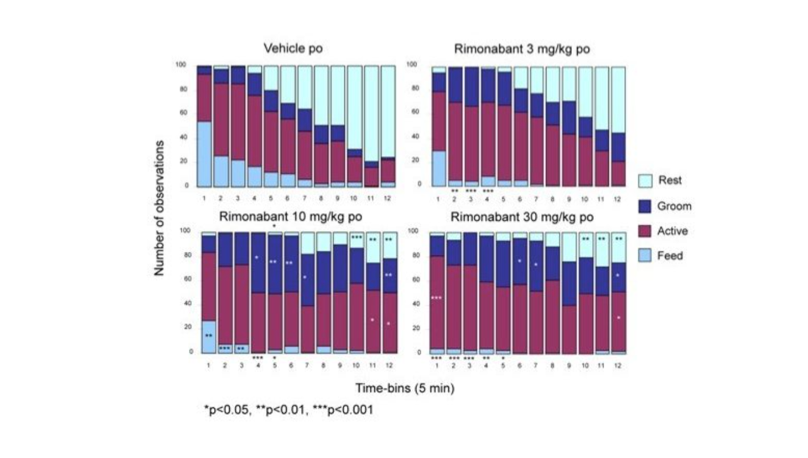Behavioural aspects of feeding to explore specificity of effects on food intake
When a drug reduces gross food intake following acute administration, several different studies can be performed to confirm that it is acting specifically on the mechanisms controlling food intake, rather than producing non-specific behavioural disruption or drug-induced malaise.
Satiety sequence profiling
Satiety sequence profiling can be performed in rats or mice, and couples’ behavioural observations with measurement of food intake. It examines the effects of drugs on the four components of the natural satiety sequence (feeding followed by activity, grooming, and resting) that occurs when an animal eats until it is full. Animals are also closely observed for any other overt behavioural effects that could affect food intake.
Effects of rimonabant on the satiety sequence profile in mice

Satiety sequence profiling can, therefore, be used to assess whether drugs are decreasing food intake by physiological mechanisms (i.e. by enhancing the natural process of satiety) or by inducing non-specific disruption of normal feeding behaviour (e.g. by producing sedation, excitation or stereotypy).
Pica (kaolin intake)
Some drugs decrease food intake by producing gastrointestinal malaise. This can be difficult to detect, as the animals may appear behaviourally normal. Rats and mice lack the emetic response, but persistent eating of non-nutritive substances in rodents (pica) can be used to measure illness-response behaviour analogous to vomiting in other species. Pica can be assessed by measuring the effects of drugs on kaolin intake.
A clinically acceptable anti-obesity agent would be expected to reduce food intake in rodents at doses that did not induce kaolin intake.
